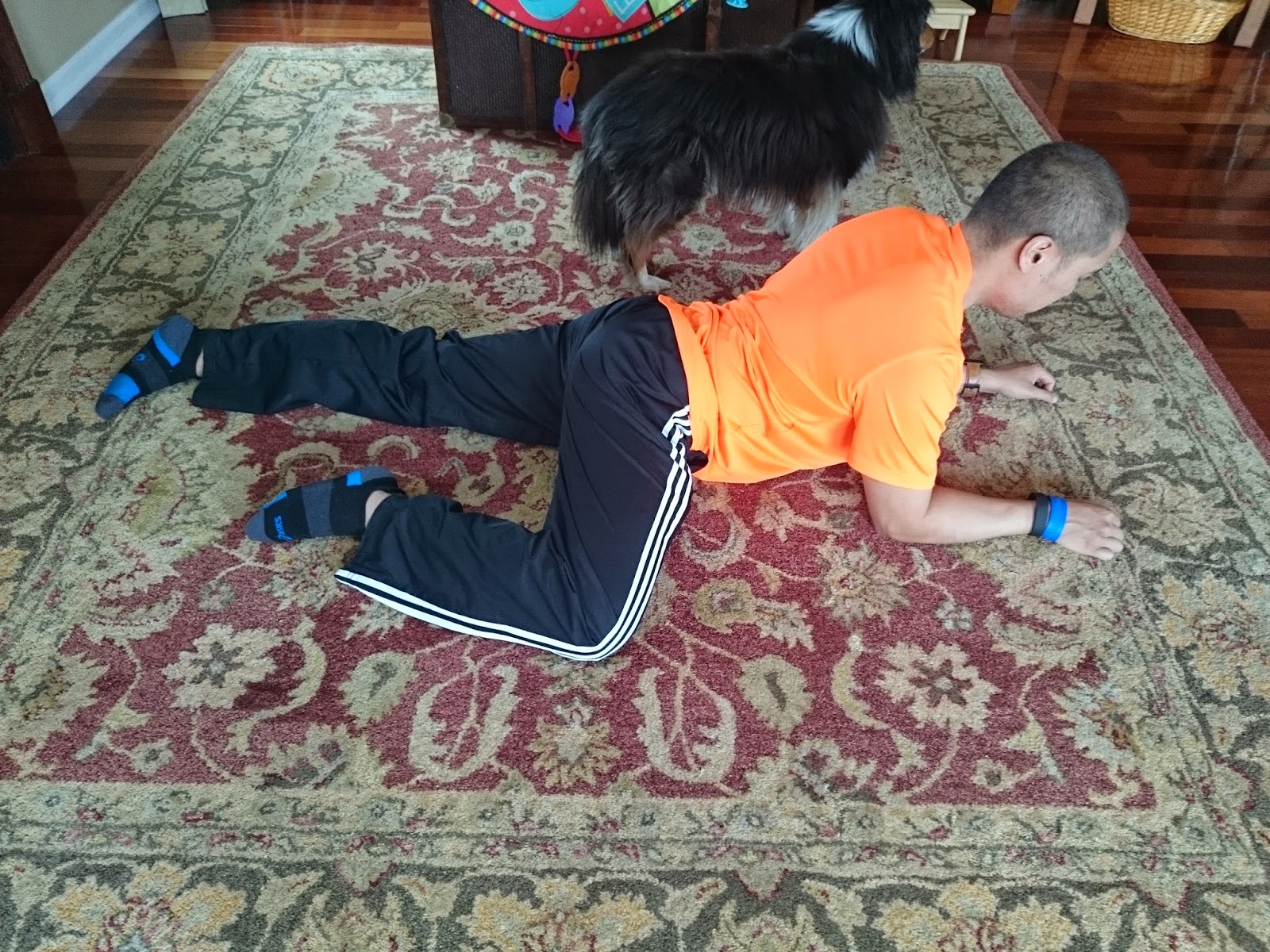Repeated loading/unloading resets are subject to the same mode that traditional exercises are; most remember intensity - end range, end range, end range, frequency gets its props as well, but most forget duration for the tough cases.
Example 1: Flared up unilateral cervical pain with or without radiating UE pain.
The clinician often tries loading cervical retraction in WB with SB OP to the involved side. When it does not centralize or decrease the pain, the movement is often abandoned right there on the spot.
Two points regarding this mistake
1) Sometimes it takes repeated loading in the directional preference throughout the day before Sx centralize and remain better
- this is often disappointing to not only the patient, but the clinician hoping for a big win
- remember to instruct the movement that is most likely to be the directional preference (toward the ipsilateral side)
- try the frequency prior to the long duration hold
2) If #1 does not work, time to try long duration in the likely directional preference NWB
- NWB is much less threatening that WB
- they may also do it over heat/ice to preference, whatever gets them through the motion
- start just 5-10 degrees into the DP, then every 5 minutes or, passively move them a bit further
- progress over 15-25 minutes until they are at end range and then have them hold end range for another 5 minutes or so
- reassess Sx location and intensity each time you progress
- any time there is peripheralization and/or increase in complaints that remains worse, discontinue or back off to a lesser range
- the Sx may increase temporarily when moving into the DP, but they often taper off as the body realizes there is no threat moving toward the pain
- this works as a type of graded exposure to the direction that patient's often avoid
For UQ - supine cervical retraction (or neutral if unable to tolerate), and SB toward the involved side
 |
| neutral with slide retraction, it's not baby weight under that chin! |
 |
| example for left sided UQ complaints, the selfie cam adds 10 pounds |
Example 2: Severe LBP with or without radiating LE complaints, or exacerbation of condition that was doing well
Two LQ progressions for duration
1) Progressive table extension
- start in prone on a hinge table
- heat/ice/stim as necessary
- either move involved limb into modified hips offset position or both in neutral
- every 5 minutes or so, carefully and gently extend the table 10 degrees or so
- repeat until at end range
- this more often than UQ above example is a yellow light, pain may increase temporarily then settle back to baseline
- remember to assess pain intensity and location regularly
- after 5-7 minutes at end range, very slowly and carefully bring them back to neutral
2) Progressive modified hips offset
- start in prone, heat/ice/stim as necessary
- then prone on elbows
- progressively raise the involved LE up to hip abduction - this also loads the involve lumbar spine
- patient may then walk over progressively SB to the involved side
- this is obviously the better choice for HEP, as above can't be done practically unless they keep using pillows
 |
| start, Lola is not amused |
 |
| prone on elbows, sometimes this also works great for very acute LBP central/bilateral |
 |
| slowly raise the involved LE up |
 |
| at end range LE abduction |
 |
| The walk-over, they may oscillate this pressure on/off into end range which often helps with centralization |
I've covered this before, but it bears repeating. These positions can sometimes be life savers to patients, especially if they learn how to manage exacerbations without you. Trust me, teaching prevention gets you more business in the end.
Keeping it Eclectic...












Post a Comment
Post a Comment